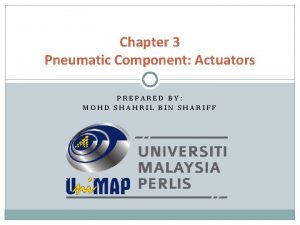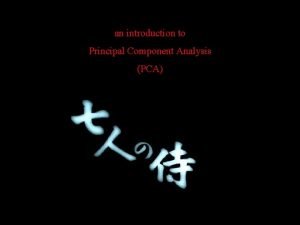Remifentanil PCA Midwifes Needtoknow Introduction Very short acting










- Slides: 10

Remifentanil PCA Midwife’s Need-to-know

Introduction • Very short acting opioid • Alternative to epidural if it’s contraindicated or unable to be sited • Better satisfaction and less neonatal depression than diamorphine or fentanyl • Must be started and prescribed by anaesthetist

Contraindications and Precautions • Allergy to opioid drugs • <37 weeks gestation (unless documented intrauterine death) • Other opioids (eg diamorphine) within last 4 hours • Unable to provide one to one midwife care • Caution if BMI>40, patient critically unwell has low body weight or obstructive sleep apnoea

Patient Preparation • She should have read the Remifentanil information leaflet • Oxygen SPO 2 monitoring, continuous CTG • Nasal O 2 2 L/min • Side effects to warn of – Itch, nausea, dizziness, sedation, respiratory depression • One to one midwife care

Practicalities • Remifentanil needs a separate cannula • Anaesthetist will prepare infusion and set up PCA pump • Timing of pushing the button is key – encourage usage as soon as the contraction starts to achieve peak effect at peak of contraction • A specific prescription/observation chart will be provided with advice and guidance • Entonox may be used at the same time

How many mothers will experience side effects? • Desaturation 12 -17. 7% • Sedation 11 -50% • Termination due to persistent desaturation despite oxygen therapy 0. 66 -0. 8% • Nausea + Vomiting 11 -60% • Pruritus 10 -50% • Crossover rate ~ 10%

Monitoring • EVERY 30 MINUTES the following observations should be measured and recorded on the Remifentanil PCA Chart: – Respiratory rate – Pulse – Blood pressure – Sedation Score – Pain score – Nausea & Vomiting Score

Troubleshooting PROBLEM Oxygen saturations below 95% ACTION TO TAKE Hypotension Systolic blood pressure less than 100 mm. Hg OR Pulse less than 50 Increase nasal Oxygen to 4 l/min Stop PCA Shake & verbally stimulate Oxygen 15 l/min via facemask Contact Obstetric Anaesthetist Ensure Naloxone 0. 4 mg available, give 0. 10. 2 mg if respiratory rate less than 4 APNOEA- BLS and dial 2222 Stop PCA Shake & verbally stimulate Increase intravenous fluid rate Oxygen 15 l/min via facemask Contact Obstetric Anaesthetist PULSELESS- BLS and dial 2222 Other problems Inadequate analgesia Nausea & vomiting score 2 or 3 Contact Obstetric Anaesthetist who may Check PCA technique Prescribe an antiemetic Contacting the Obstetric Anaesthetist Bleep 7402 Severe Respiratory Depression Oxygen saturation below 93% OR Respiratory rate less than 8 OR Sedation Score 3

Further Practicalities • For replacement syringe please call anaesthetist • When discontinued, remove cannula WITHOUT flushing • Discard and sign for wasted drug when discontinued

Summary • • A safe and effective alternative when epidural not possible Quick and simple to initiate One to one monitoring is vital as per the guideline Please sign that you’ve seen the presentation! • Lucy. Mc. Manamon@boltonft. nhs. uk • Inese. Kutovaja@boltonft. nhs. uk • Peter. Sandbach@boltonft. nhs. uk
 Short short short long long long short short short
Short short short long long long short short short Anesthesia definition
Anesthesia definition It is a very shallow skillet with very short sloping sides
It is a very shallow skillet with very short sloping sides Basic pneumatic circuit
Basic pneumatic circuit Difference between single acting and double acting
Difference between single acting and double acting Difference between single acting and double acting
Difference between single acting and double acting Method acting vs natural acting
Method acting vs natural acting Introduction to pca
Introduction to pca Very bad to very good scale
Very bad to very good scale Multiplication of scientific notation
Multiplication of scientific notation Fewfew
Fewfew


















